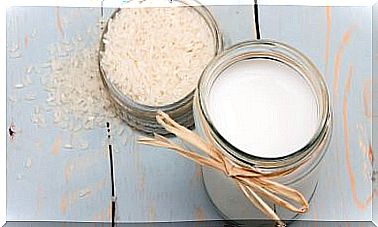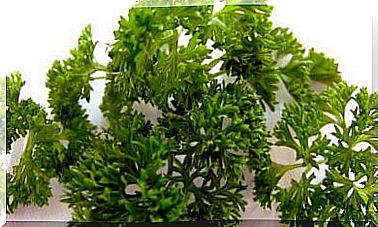The Most Exotic Fruits In The World And Their Properties
In tropical countries, fruit trees grow in abundance and offer a good number of juicy, sweet and tasty fruits. These are called exotic fruits in those countries where they are not grown and import is necessary to be able to taste them.
Some are well known around the world such as pineapple, coconut or avocado. However, there are other very local and specific varieties. If you are curious to know about them, we invite you to continue reading this article.
What are exotic fruits?
Exotic or tropical fruits are all those that need a warm environment for their optimal development and growth. Therefore, it is the climate that defines them and not their biological characteristics.
In general, they grow in tropical or subtropical countries where they have conditions that are optimal for them. Exotic fruits need warm temperatures since they cannot bear the cold because it can damage them or influence their growth.
These are highly recommended foods to stay hydrated due to their water content. They also provide vitamins, antioxidants, minerals and fiber, nutrients that are considered positive for the body.
The 32 most curious exotic fruits in the world
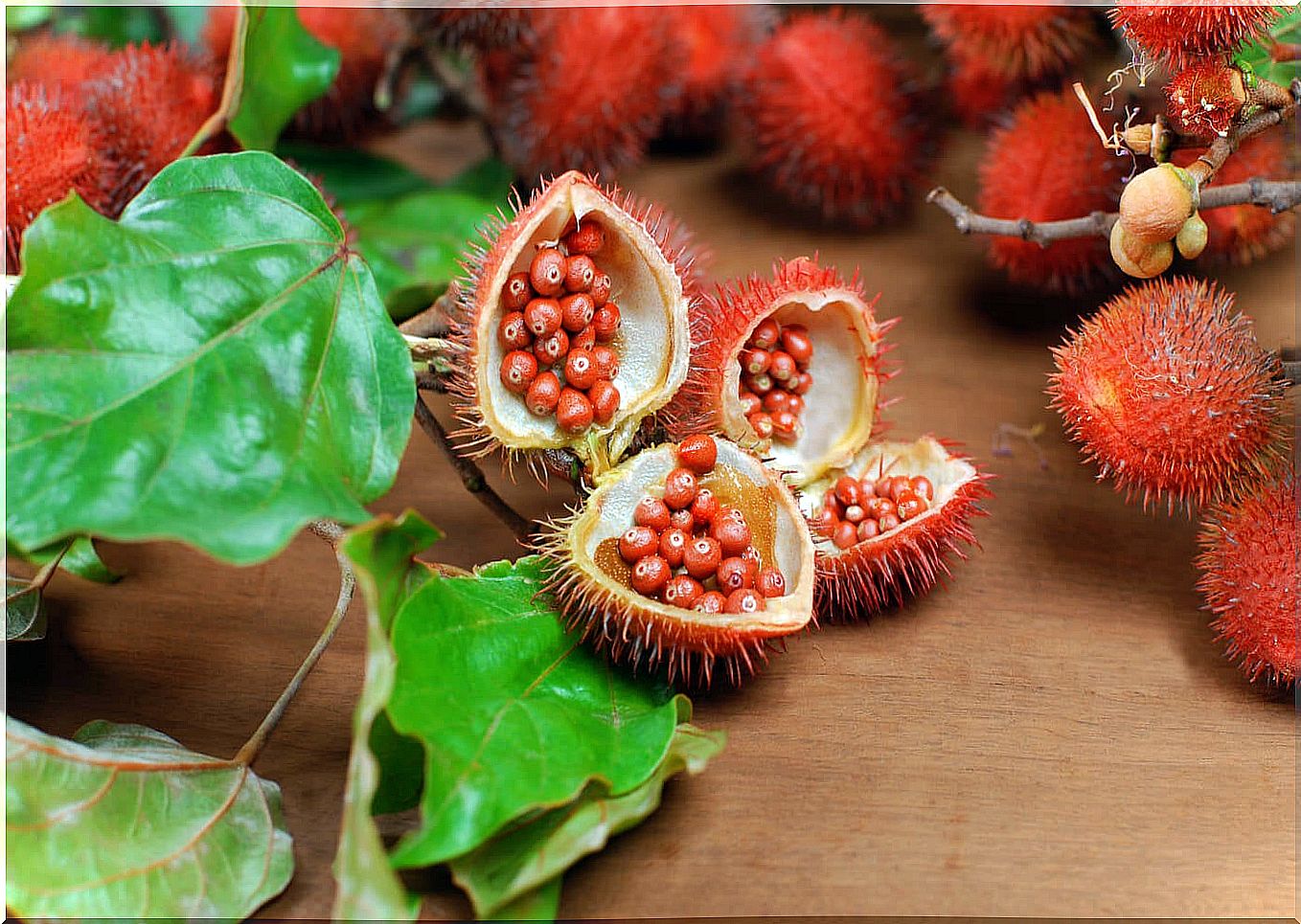
Achiote
Native Americans used it for a long time as a colorant in food products and as a body and face paint. Although its fruit has almost no flavor, its seeds contain tocotrienols and tocopherols, which makes them an interesting source of vitamin E.
Akebia
The Akebia quinata is a climbing plant highly appreciated for the vanilla aroma of its leaves. Its fruits are similar to chocolate, with a soft and sticky pulp. According to traditional Chinese medicine, its dried roots would have a diuretic effect.
Akee
It is a fruit from the same family as lychee and longan. It is the national fruit of Jamaica and its arils are part of a large number of Caribbean recipes. However, there is scientific data on its toxic potential that can be fatal.
Anon
It is often confused with custard apple because of its rounded shape and the green scales that make up its skin. The edible part is inside and is a white pulp full of brown seeds. Its contribution of fiber, vitamin C and some of group B.
Khaki
The persimmon or persimmon has spread to many countries of the world where it is already in habitual consumption. There are many varieties that are a source of fiber and antioxidants, substances that act as protectors, for example, of cardiovascular health.
Cannon
The star fruit or star fruit is a medium-sized fruit with a yellow color that reveals its carotene content. Due to its beautiful star shape, it is very decorative in green salads, garnishes or fruit salads.
Custard apple
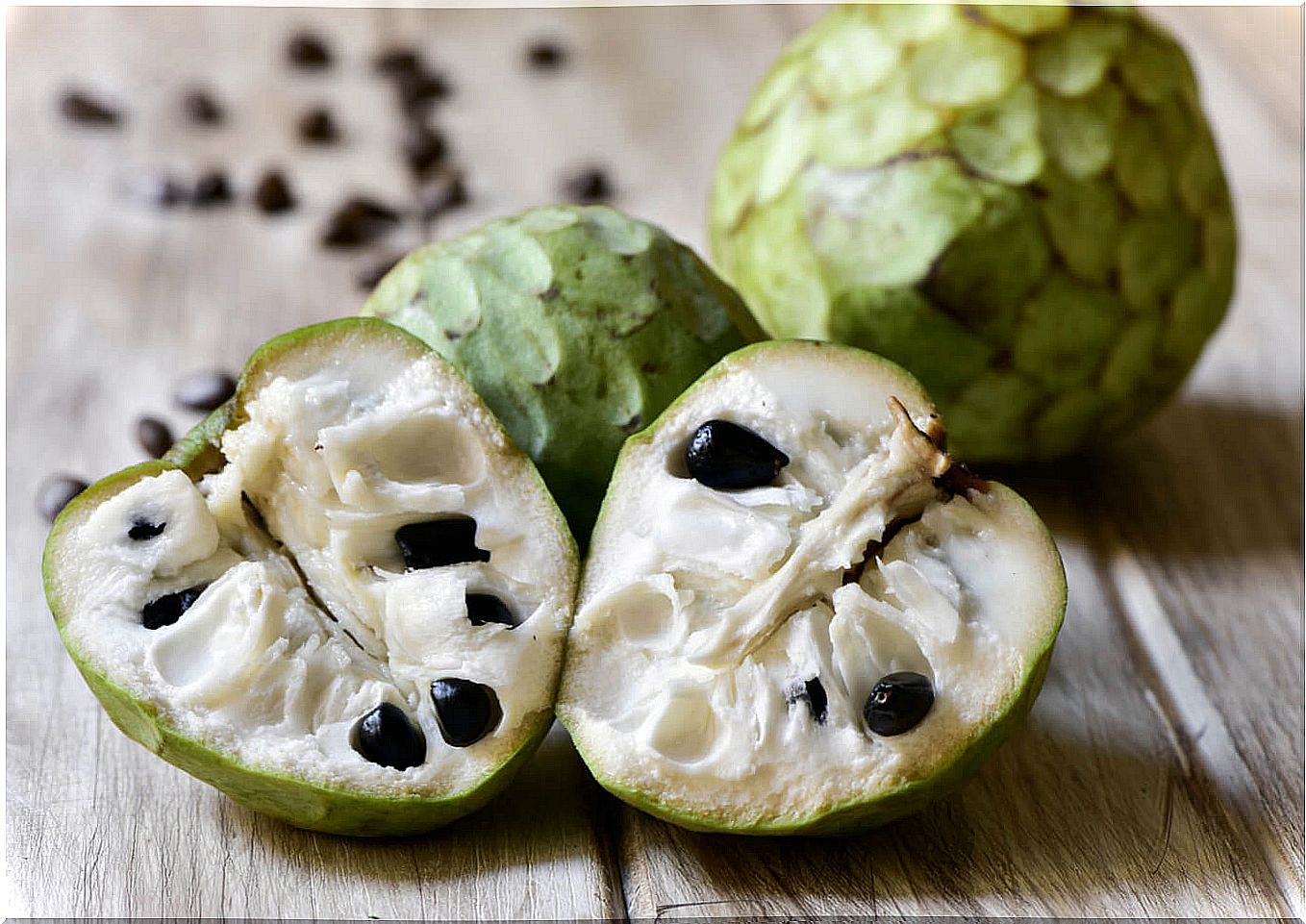
Fruit of a tree of the genus Annona, native to tropical and sub-tropical areas of South America. Its medium-sized fruits have sweet and slightly acidic flesh. The pulp is soft and eaten with a spoon, although smoothies, drinks or sorbets can also be prepared.
Copoazu or white cocoa
It is a tree of the cacao family but its fruit is white in color and has a higher proportion of pulp that is used in the preparation of compotes, cakes and other sweets. With the seeds, the cupulate is made , very similar to chocolate.
Durian
This Asian fruit is reputed to be one of the worst smelling fruits in the world. So much so that in countries like Singapore or Malaysia it is forbidden to enter with it in some markets and hotels. However, its taste is different and it has many followers.
For the brave who dare to try it, it is important to consider that its unappetizing appearance hides a creamy texture suitable for spreading on top of bread and adding to savory recipes. Provides fiber, vitamins and minerals.
Breadfruit
This is one of the tropical fruits with a nutritional composition that is more different from the rest of the fruits. It has a high concentration of starches and a small amount of water (10% of the total weight). It is a staple in the Caribbean where it is eaten fried, boiled or baked.
Miracle fruit
One of the exotic fruits from Africa is the magic berry or miracle fruit. Almost unique in the world, it has the ability to alter the perception of sour or bitter foods in sweets. In addition, it multiplies the spice of capsaicin.
Gac
Native to East and Southeast Asia, the gac fruit is traditionally used in Thai and Vietnamese cuisine mixed with rice, in curries or other stews. It has a marked orange color that reveals the high presence of lycopene and beta-carotene.
Thanks to them, it is a food recommended to maintain eye health, such as alleviating the symptoms of dry eyes and raising blood plasma levels. These pigments are concentrated above all in the arils more than in the fruit itself.
Soursop
Guanabanero trees are native to the Caribbean and Central America but, today, their cultivation is widespread. Its fruits are dark green with an acidic and aromatic pulp.
Guava
Guava is a fruit in the same family as cinnamon, pepper, and cloves. For this reason, it has a spicy aroma similar to musk. Thanks to its pectin content, a kind of quince is made with its meat. It is one of the tropical fruits with the most vitamin C, it is concentrated around the skin.
Jackfruit
The consumption of this specimen is booming. Within its nutritional contribution, the beta-carotene content stands out. These have been the subject of scientific study due to their possible positive effects on chronic degenerative diseases, cardiovascular problems or inflammations.
Kiwano
This yellow fruit comes from the same family as cucumber and melon. In fact, it is known by the names of horned cucumber or African melon. It can be used in salads or tasted with a little sugar, in this way its flavor is reminiscent of a mixture of banana and kiwi
Litchi
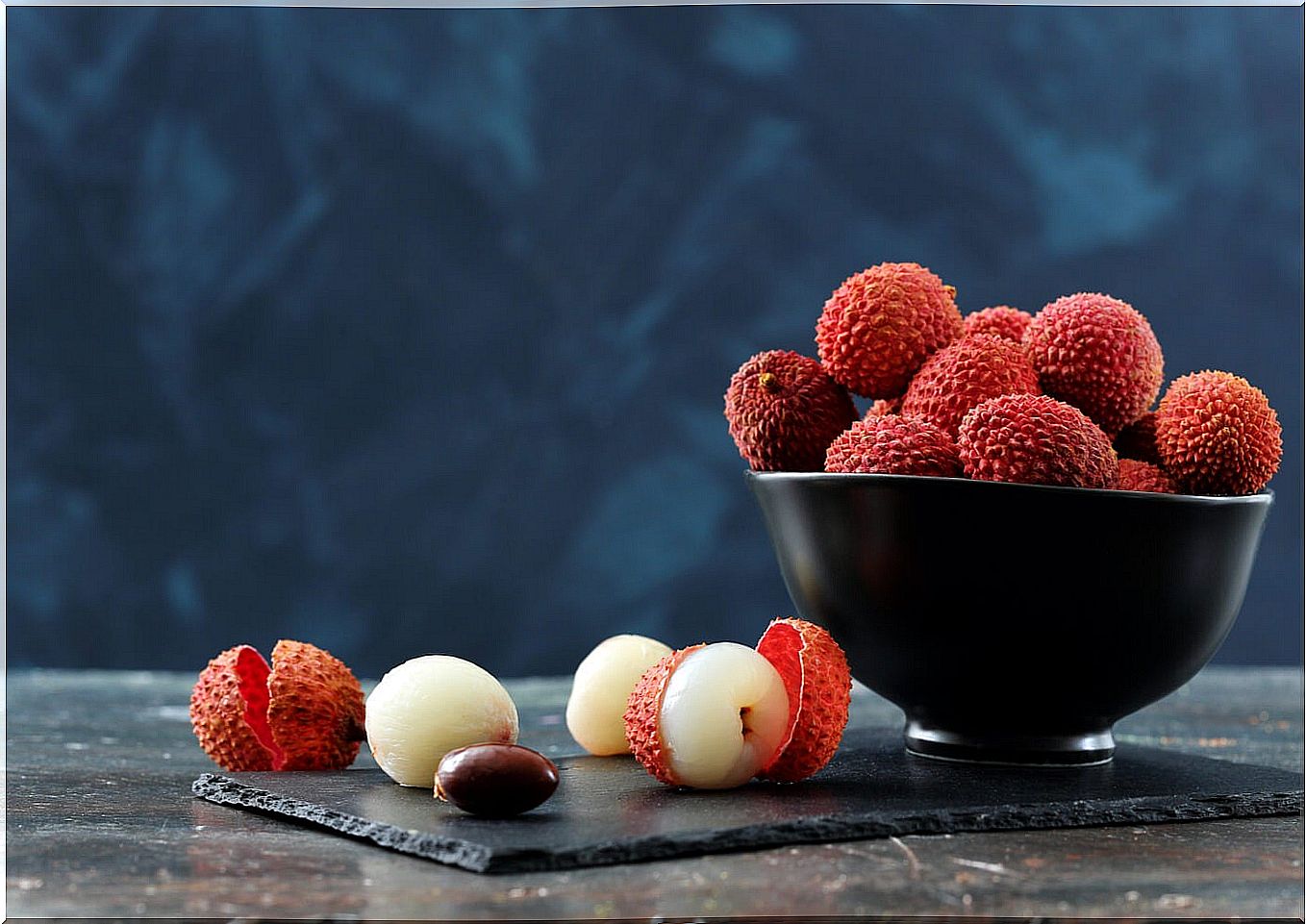
Also known as the Chinese plum, it was one of the favorite fruits of the emperors of the Tang dynasty. Its fruit is small and sweet with a marked floral aroma. It is covered by a rough red skin that is easily removed.
Longan
Its name means “dragon’s eye” because inside there is a single black seed that is reminiscent of the eyeball. Its interior hides a juicy and sweet pulp with a flavor reminiscent of hazelnut.
Mamey
The fruit produced by the Pouteria sapota tree is usually eaten raw or made into bars, smoothies or ice creams. It provides different nutrients such as potassium, manganese, fiber and group B vitamins. In addition, sapayul oil for cosmetic use is extracted from its seeds.
Mongoose
From the Garcinia mangostana tree, it is one of the most marketed exotic fruits as a nutritional supplement. It can be found in the form of juices and other types of beverages.
The presence of xanthones has placed it in the spotlight of scientists in order to develop new drugs for chronic and degenerative diseases.
Buddha hand
Without a doubt, the Buddha’s hand is one of the most curious exotic fruits on the market. It is a variety of citrus that has the fruits separated into sections similar to the fingers of a hand. Its use is also different since it has almost no pulp. In China and Japan, it is used to scent clothes or houses and is one of the offerings offered to Buddha.
Passion fruit
Also known as passion fruit or granadilla. In its composition, the presence of carbohydrates stands out, making it a good source of energy for after sports. It also provides vitamin C and provitamin A, a very good substance for the skin, mucous membranes and the immune system in general.
Marang
This fruit has an aroma similar to durian but is not as intense and disappears when the skin is removed. Its flavor is similar to that of banana and you have to consume it quickly as it oxidizes and spoils easily.
Sweet Cucumber
A shrub in South America produces very juicy and quite sweet fruits. Sweet cucumber is considered refreshing, since the water content is higher than usual in other fruits.
Pineberry or white soul

Its name means “pineapple berry” and it is a hybrid fruit derived from the strawberry. Really little known, it was marketed for the first time in the United States in 2012. It is small and although it has a shape very similar to strawberries, its flavor is more reminiscent of pineapple.
Pitaya
Dragon fruit stands out for its high content of antioxidants, which are found in greater amounts in its red parts. These are positive for health because they can delay the aging of the skin, the appearance of degenerative diseases or some types of cancer, according to research.
Platonia
This tropical fruit is the only one of the Platonica genus . Its cultivation is mainly concentrated in the Brazilian Amazon. It has a very interesting composition with high concentrations of vitamin C, A, calcium and magnesium. It is also valued for its use in cosmetic products.
Watermelon radish
With the shape of a radish and the color of watermelon, it is a fruit of Chinese origin that today is very little known. It has a green rind on the outside and its flesh is pale pink with a succulent and crunchy texture.
Rambutan
Native to Malaysia and Indonesia, it abounds in markets throughout Southeast Asia. It is small with a red, spiky outer skin and a creamy white interior. It has a striking amount of antioxidants such as flavonoids and polyphenols. Its contribution of iron and calcium also stands out.
Salak
This is the fruit of a palm native to Java and Sumatra. It has a strong flavor that is very sweet and acid at the same time. Some varieties are crisp and moist like apples and others are drier.
Tree tomato
Tomatillo, Andean tomato or Nordic mango, these are some of the popular names for Solanum betaceum . It can be used raw or cooked and is a traditional remedy used to relieve symptoms of flu, colds, and throat problems in Colombia and Ecuador.
Cape gooseberry
It is a solanaceous plant so it has characteristics similar to those of tomato and potato. It is also known by the names of uvilla or aguaymanto. It is appreciated for its content in vitamin C and A, potassium, phosphorus and calcium. It is sold fresh, dehydrated or in syrups, jams and compotes.
Other exotic fruits that stand out for their properties
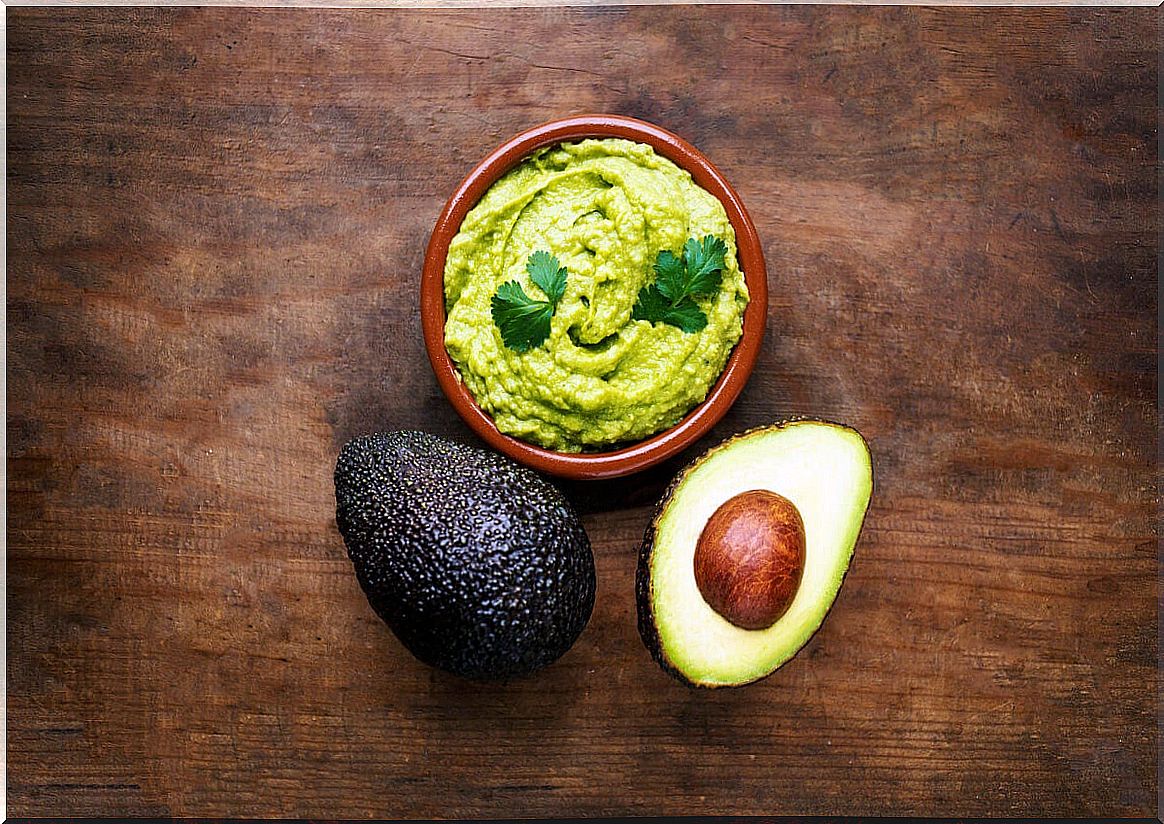
Not all fruits that grow in tropical climates are so unknown or difficult to find in most markets. Some of them have become common in much of the world and also stand out for their interesting composition.
Avocado
Unlike the vast majority of exotic fruits, it stands out for the quality of its fats; various investigations have observed a possible protective effect of cardiovascular health by them. Also, its majority use in savory dishes is special.
Pineapple
Opening one of these fruits at its point of maturity is synonymous with fragrance and sweetness in the kitchen. It is used both in desserts and in salads or in the preparation of some oriental recipes. Its stem contains some very interesting enzymes to improve digestion. In addition, it provides water, fiber, vitamin C and manganese.
Mango
It is perhaps one of the most appreciated fruits in the world. Mango comes from India where it is another Ayurvedic medicine remedy. Its chemical composition is very varied, which is why its beneficial properties for health are studied. Among them, its antioxidant, antiparasitic, anti-inflammatory and antidiarrheal effects stand out.
Banana
Bananas are highly valued in Europe, where almost all of its exports are directed. This characteristic curved fruit has a rich starchy pulp and can be eaten alone or used in cooking.
Coconut
Coming from South Asia, its consumption has resurfaced strongly in recent years; especially some derived products such as coconut oil, sugar, flour or water.
Exotic fruits
Eating fruits on a daily basis has many health benefits. They are light, diuretic, provide fiber and an interesting amount of vitamins and minerals among other nutrients.
In general, they are healthy and can be part of the daily diet. The best recommendation is to choose varied, seasonal and local fruits. Some exotic fruits such as pineapple, mango, papaya or banana are found in the markets on a regular basis. However, the vast majority are very local and it is better to eat them from time to time or take advantage of trips to taste them.
